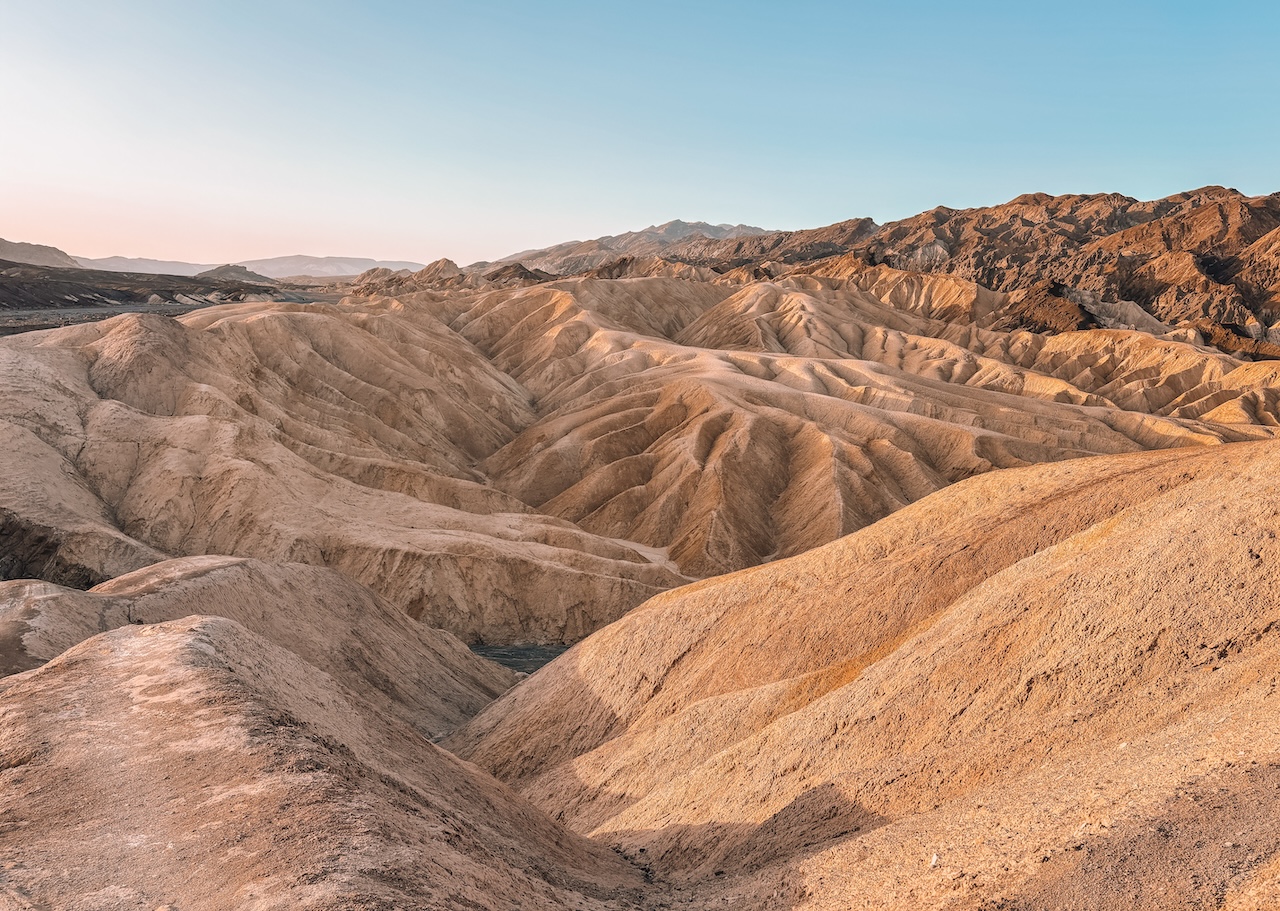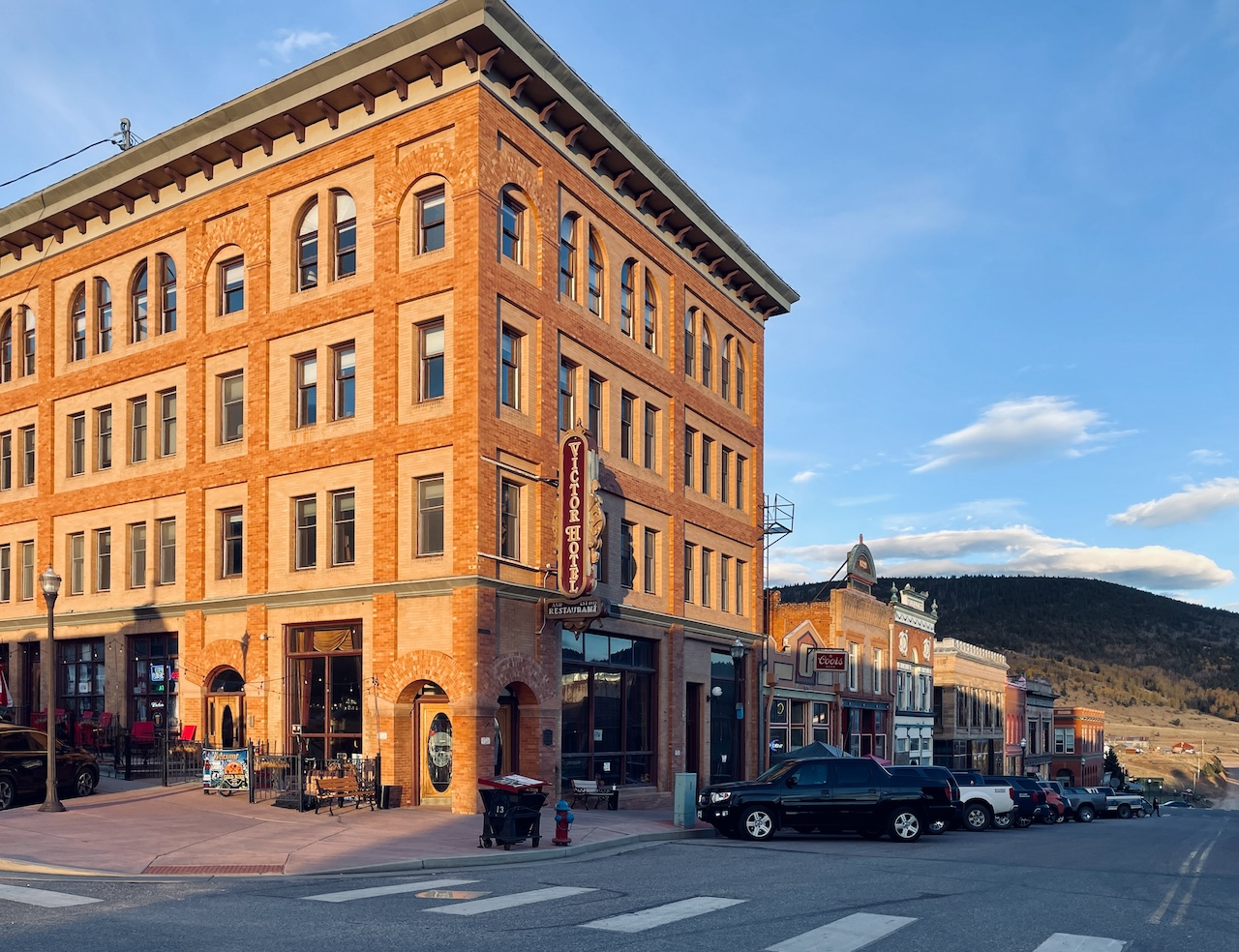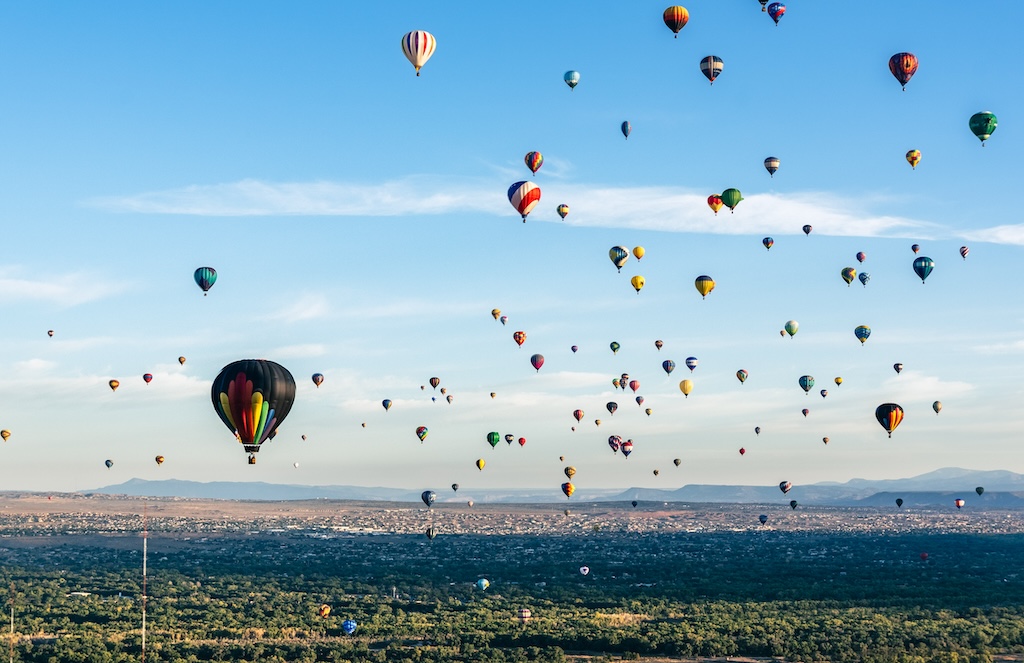
My First Flight (and Crash) at the Albuquerque Hot Air Balloon Fiesta
The Albuquerque Hot Air Balloon Fiesta: A Sky Full of Color and Tradition
New Mexico might be one of the most colorful states I have ever visited, and that’s not just because of its painterly desert landscape. It’s also because of its vibrant culture and its most time-honored tradition. Every October, the skies above Albuquerque, New Mexico, transform into a living canvas of color during the Albuquerque International Balloon Fiesta. While the first hot air balloon flight took place in 1783 in Paris, the ABQ balloon rally didn’t launch until 1972. What started as a modest gathering of just 13 balloons has now evolved into the world’s largest hot air balloon festival, attracting nearly one million visitors and balloonists from around the world each year.
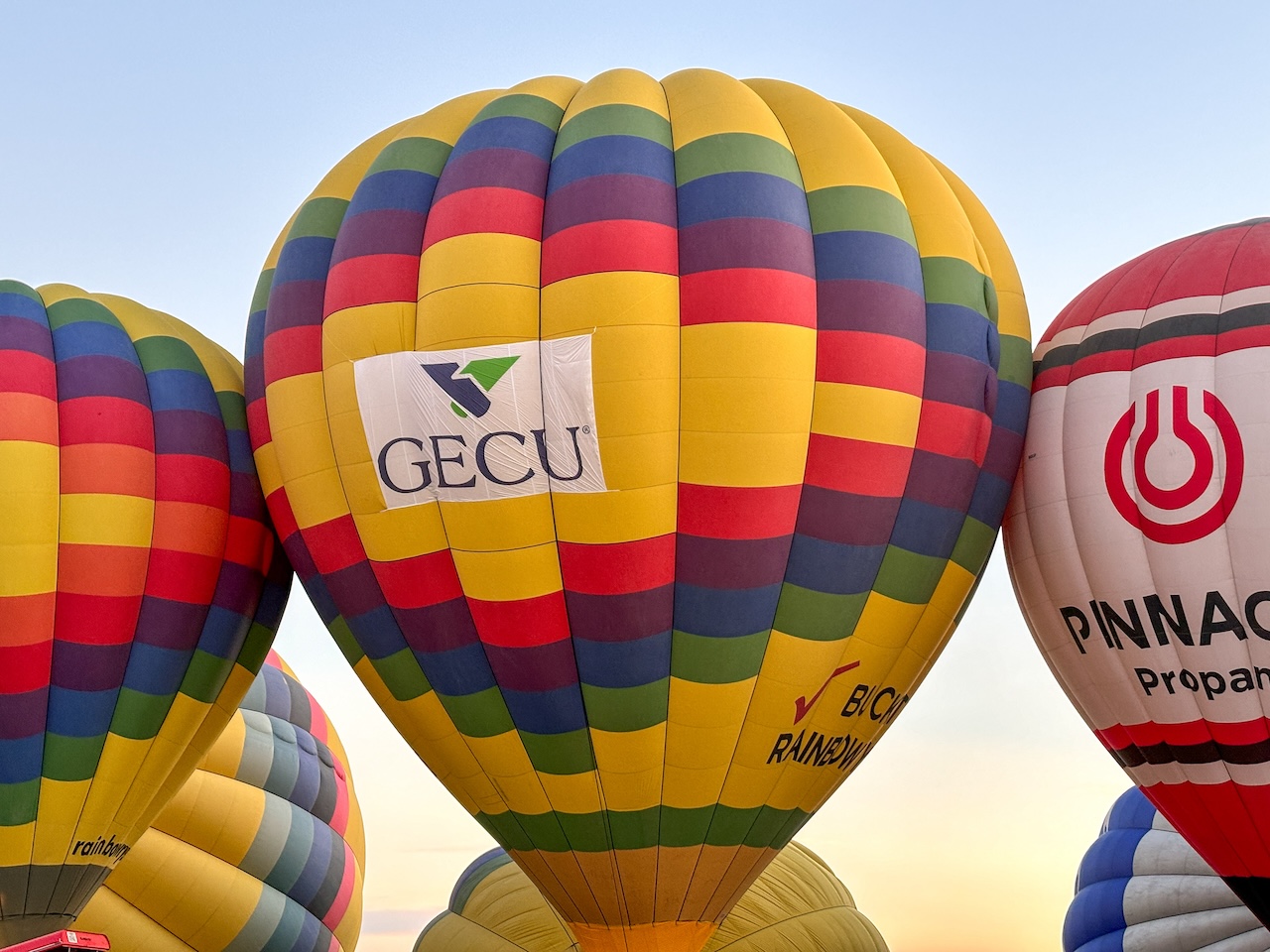
For nine days, early mornings and crisp desert air set the stage for the mass ascension of 600+ balloons floating above the Rio Grande Valley. It’s a pilgrimage for not only the pilot and crew who travel from all over the world, but also for dedicated spectators who come from near and far to be a part of it all.
Aside from the sheer number of balloons that fill the sky, the Balloon Fiesta is a crowd favorite because everyone is allowed on the field with the pilots, crew, and balloons. It’s an experience unlike any other. Walking amongst these gentle giants, as pilots and crew members gear up for takeoff, feeling the heat from propane bursts, you can feel the energy and excitement the moment you step on the field. This unique feature of the event is all thanks to the Albuquerque International Balloon Fiesta’s safety record; the Federal Aviation Administration (FAA) allows spectators to be on the Launch Field while the balloons are inflating and launching. Strict safety precautions are taken seriously. Balloons will not lift off if ground-level winds exceed 10 knots and if the height of the lowest layer of clouds is below 1,500 feet above the ground.
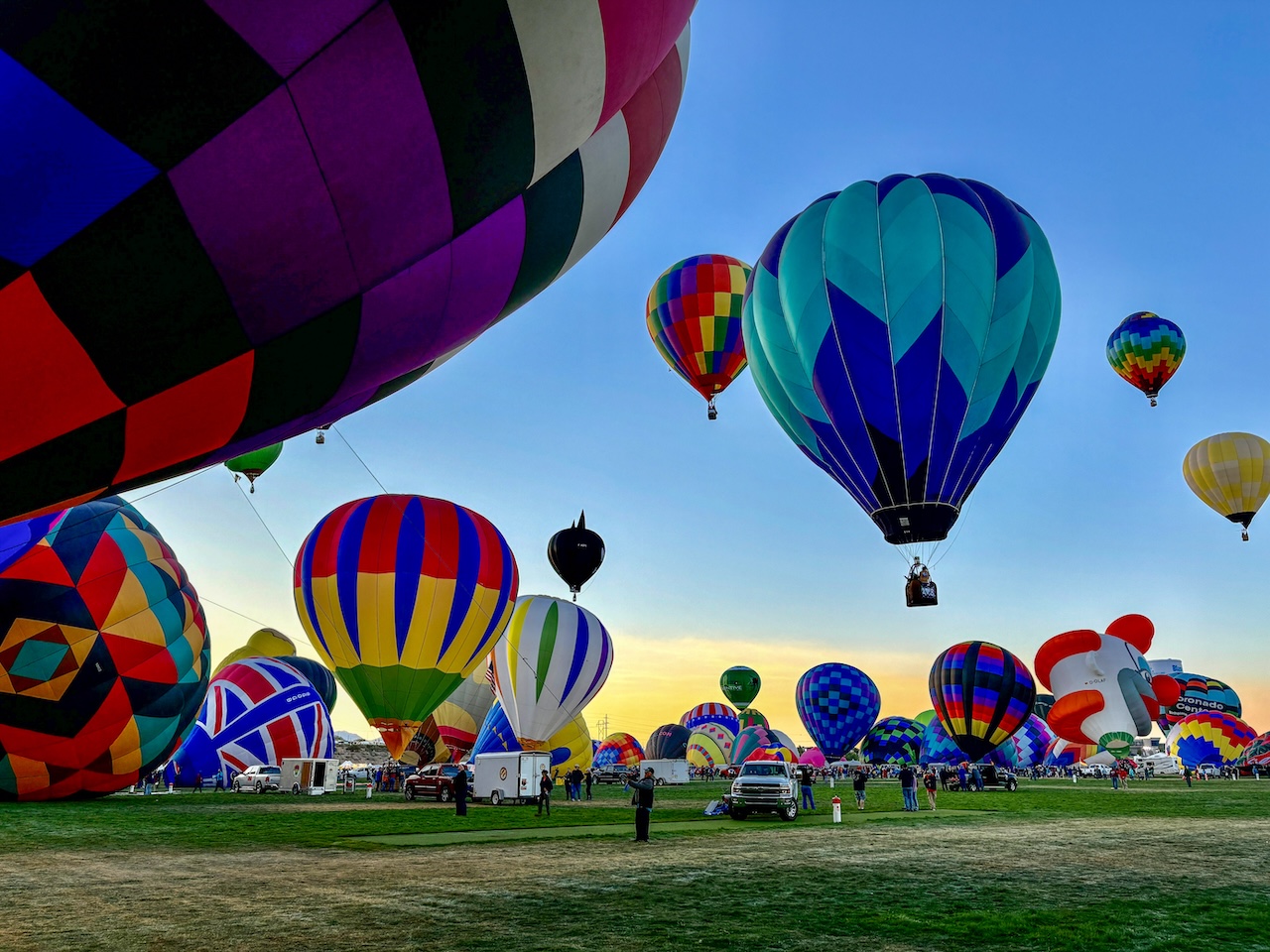
Beyond the morning mass ascension, the event has grown over the years to include other programs, including a morning drone show, Balloons Fiesta Live!, and the Special Shapes Glowdeo, as well as the famous zebras and chainsaw carvings. Balloon Fiesta even has its own food fare, with breakfast burritos, hot cocoa and coffee, and champagne toasts on the menu.
Why Albuquerque?
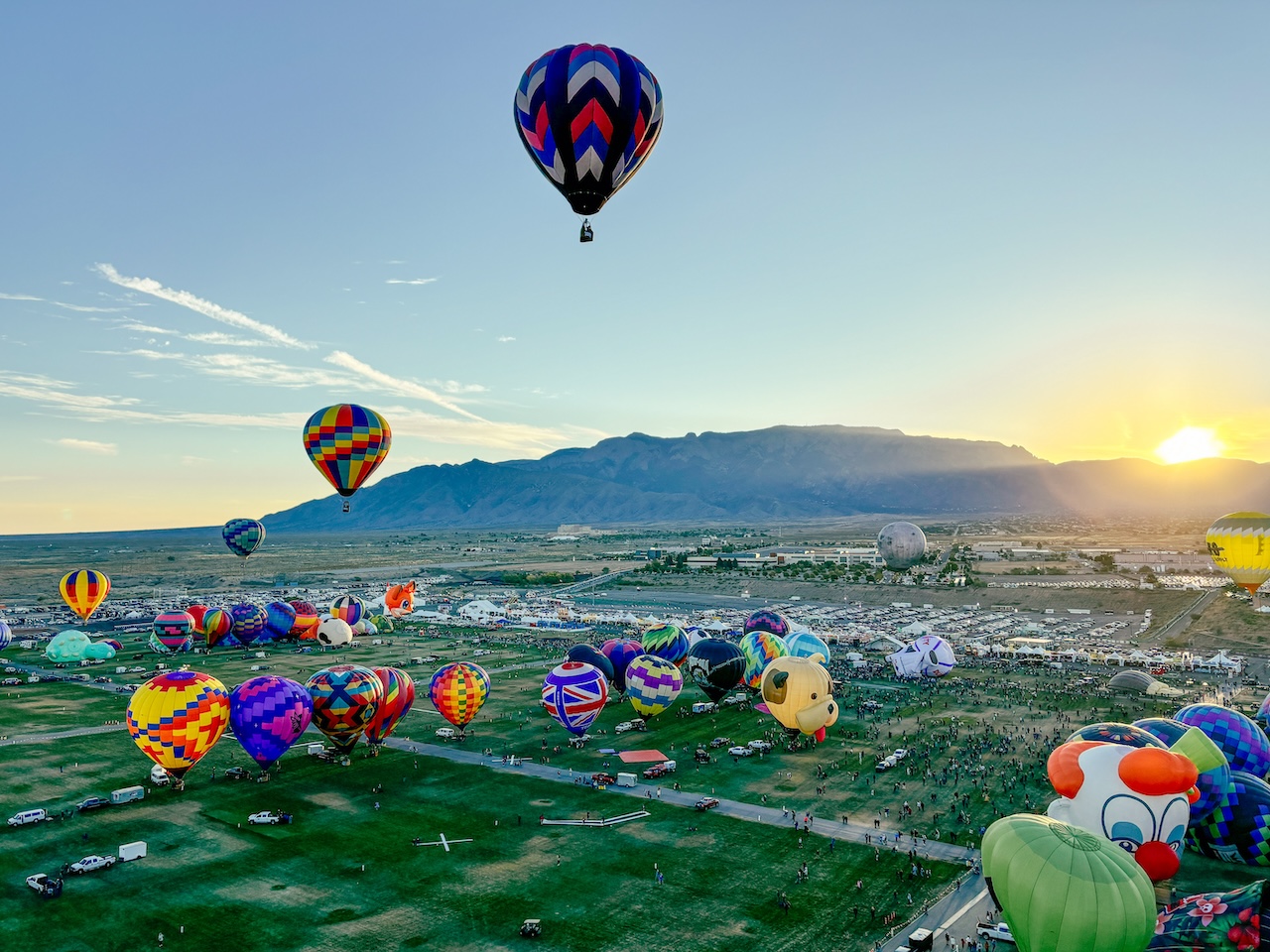
So why is the event held in Albuquerque? The success of this signature event is largely due to the city’s almost-perfect flying conditions. Albuquerque’s high desert climate and the unique wind patterns of what’s called the “Albuquerque Box” — where atmospheric wind patterns at different altitudes blow in perfectly opposite directions — create the ideal environment for ballooning. Skilled pilots can actually navigate their balloons in a sort of natural loop, allowing them to take off and land (most of the time) in the same place. Balloon Fiesta Park rests in the middle of the Rio Grande Valley, with the Sandia Mountains to the east and the West Mesa to the west, creating a bubble of idyllic weather for balloonists. The “box” is also what makes the event safe for both participants and spectators alike.
But even on the morning I was set to take my first flight at the Albuquerque Hot Air Balloon Fiesta, the winds changed just enough, flinging us into uncharted territory for one epic ride and landing.
My First Flight (and crash) at the Albuquerque International Balloon Fiesta
My own experience attending the Balloon Fiesta was equal parts surreal and exhilarating. I thought I knew what to expect as I’d seen the photos—skies painted with color, crowds pointing upward in awe—but nothing prepared me for the moment I stepped into a wicker basket and felt the ground slip away beneath me.
I was fortunate enough to be granted access to ride in one of the balloons as part of my media trip. For general spectators, you will have to pay $500 to ride in one of the balloons from Rainbow Flyer. This is the only commercial company operating at the event that offers balloon rides.
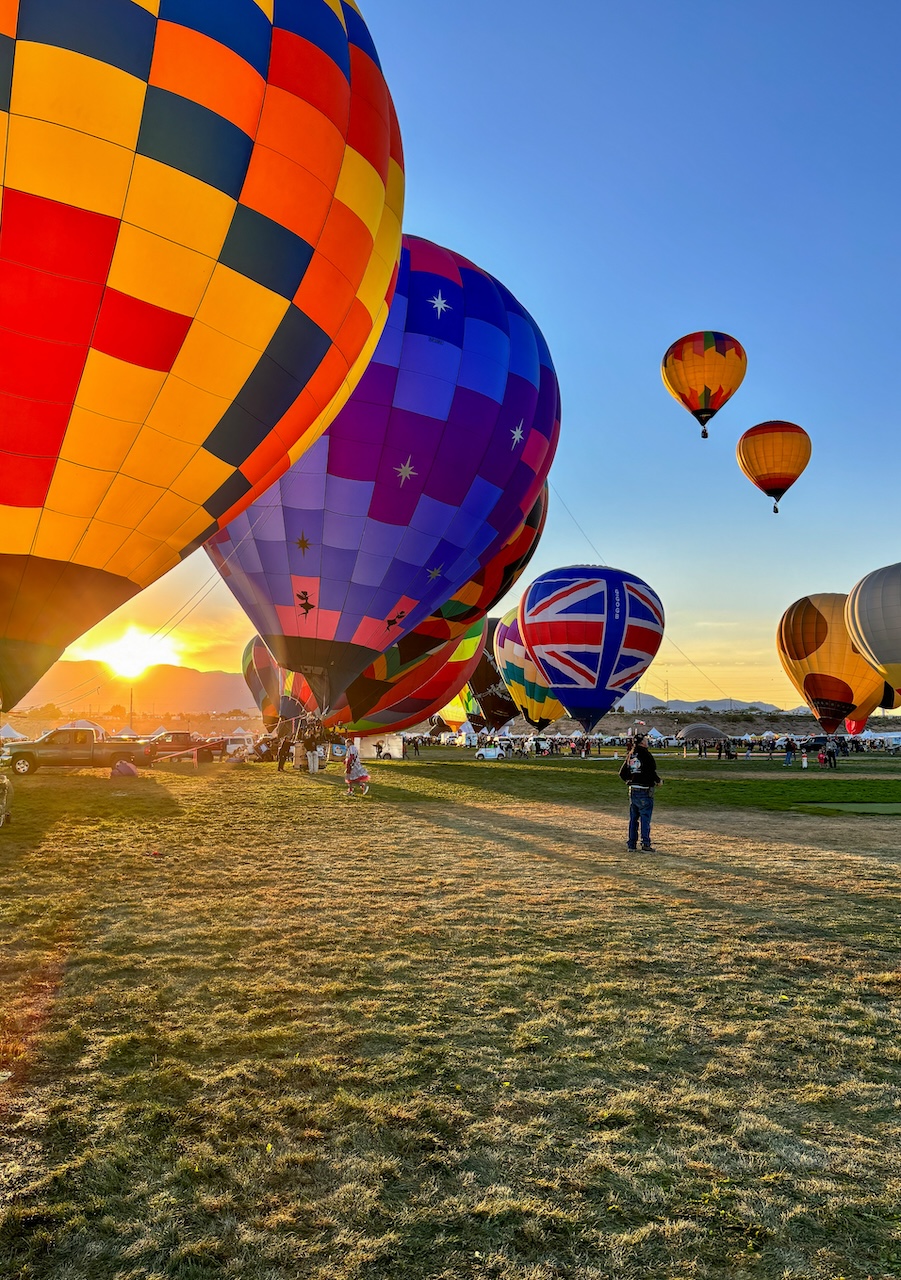
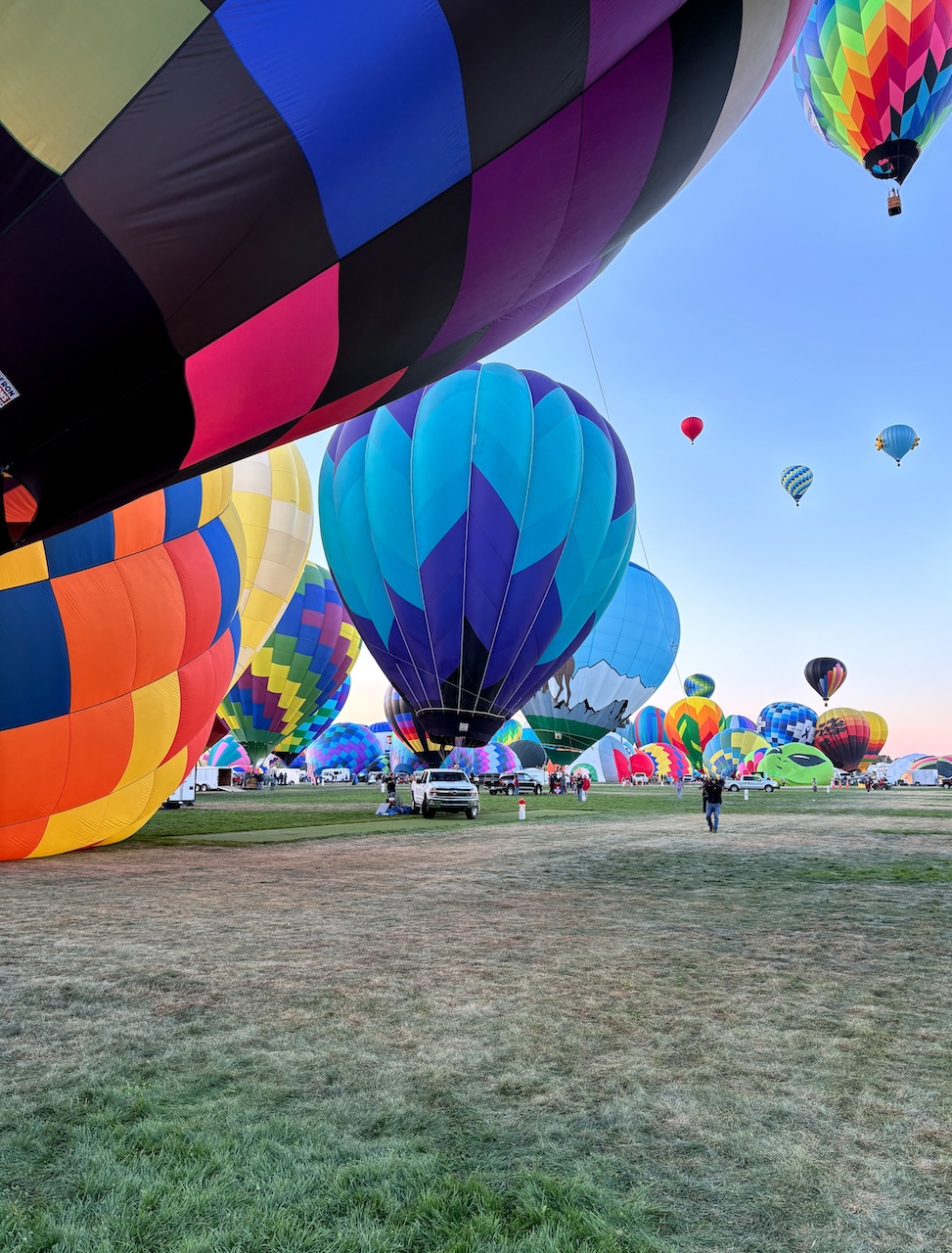
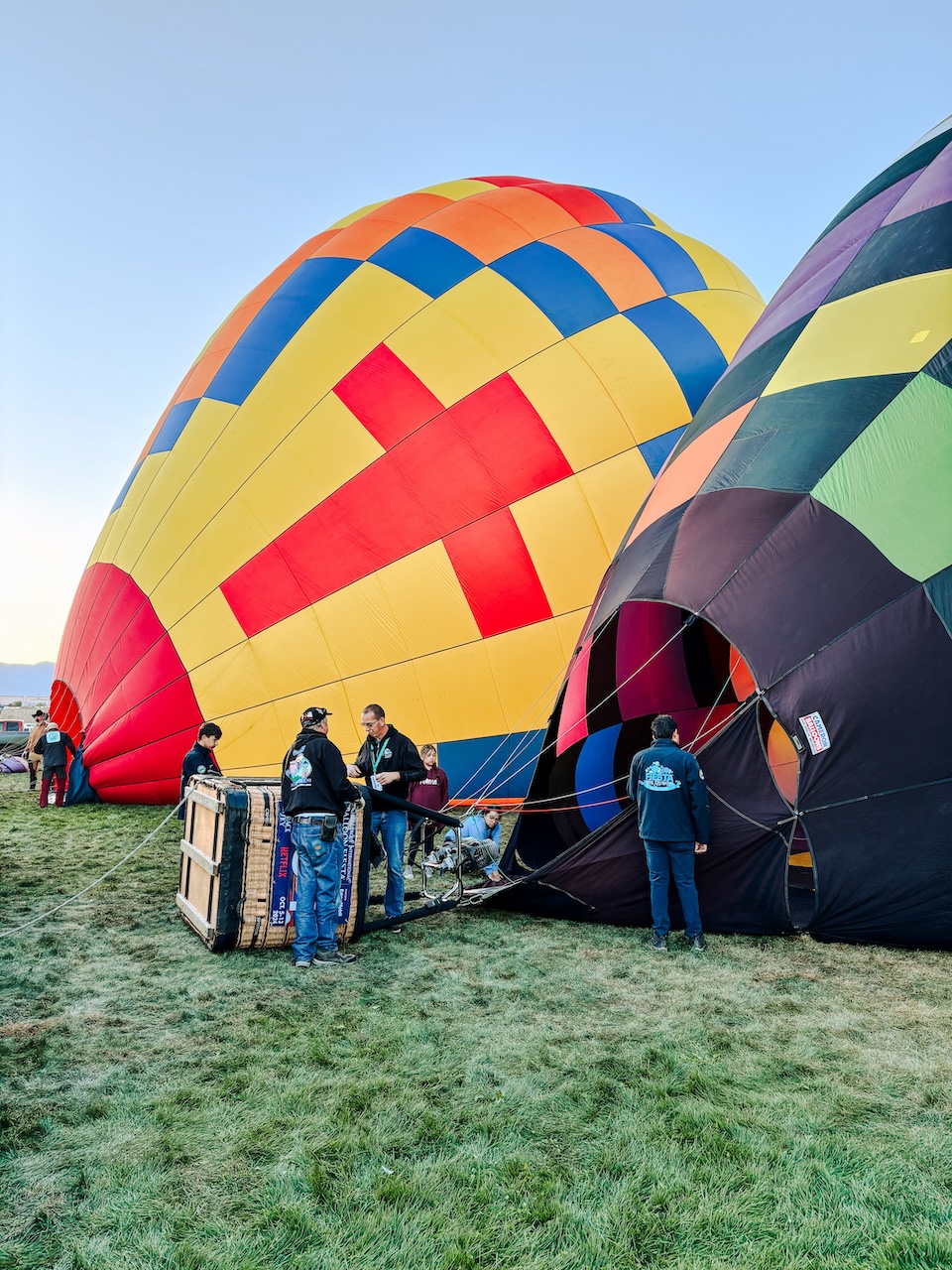
My day started at 4 a.m., long before the sun brushed the Sandia Mountains. With my coffee in hand, I made my way to the Balloon Fiesta Park, a.k.a. “the box,” the grassy launch field where hundreds of balloons would soon take flight. The hiss and glow of propane burners lit the way as I walked through the park, watching as the pilots and crew members unfurled fabric across the grass, inflating their balloons while onlookers gathered in groups to watch the build-up to the mass ascention.
I’d been assigned to fly with Eileen Jones, a veteran pilot from Alabama who comes to Albuquerque each year with her co-pilot, a.k.a. her husband. Our basket was small, holding just the two of us and one crew member—a volunteer from a group known as Boomers and Ballooners. Volunteers, called Navigators, are the lifeblood of the Fiesta. They chase balloons, run food stalls, crew for pilots, and make it possible for thousands of visitors to feel part of the action.
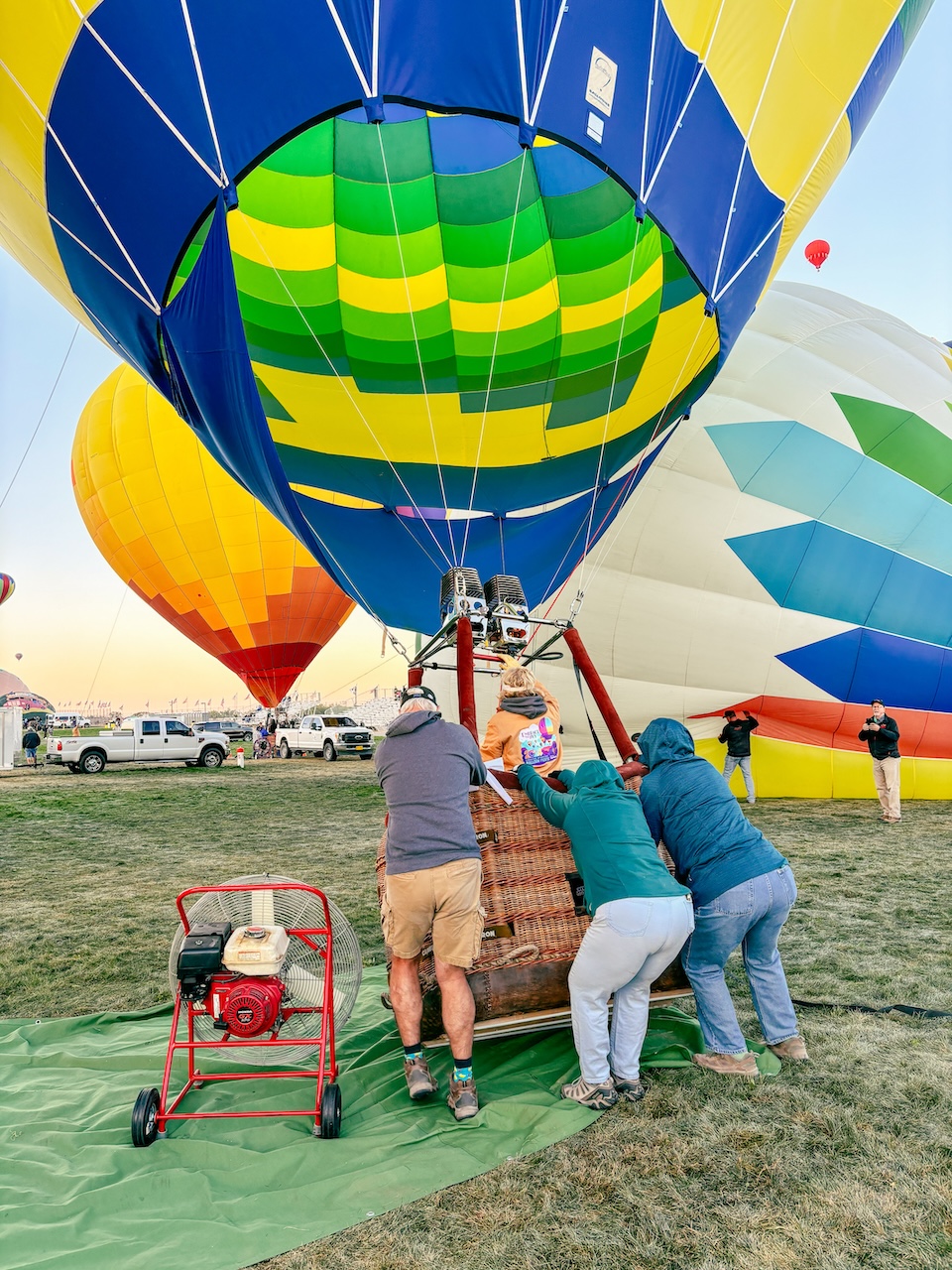
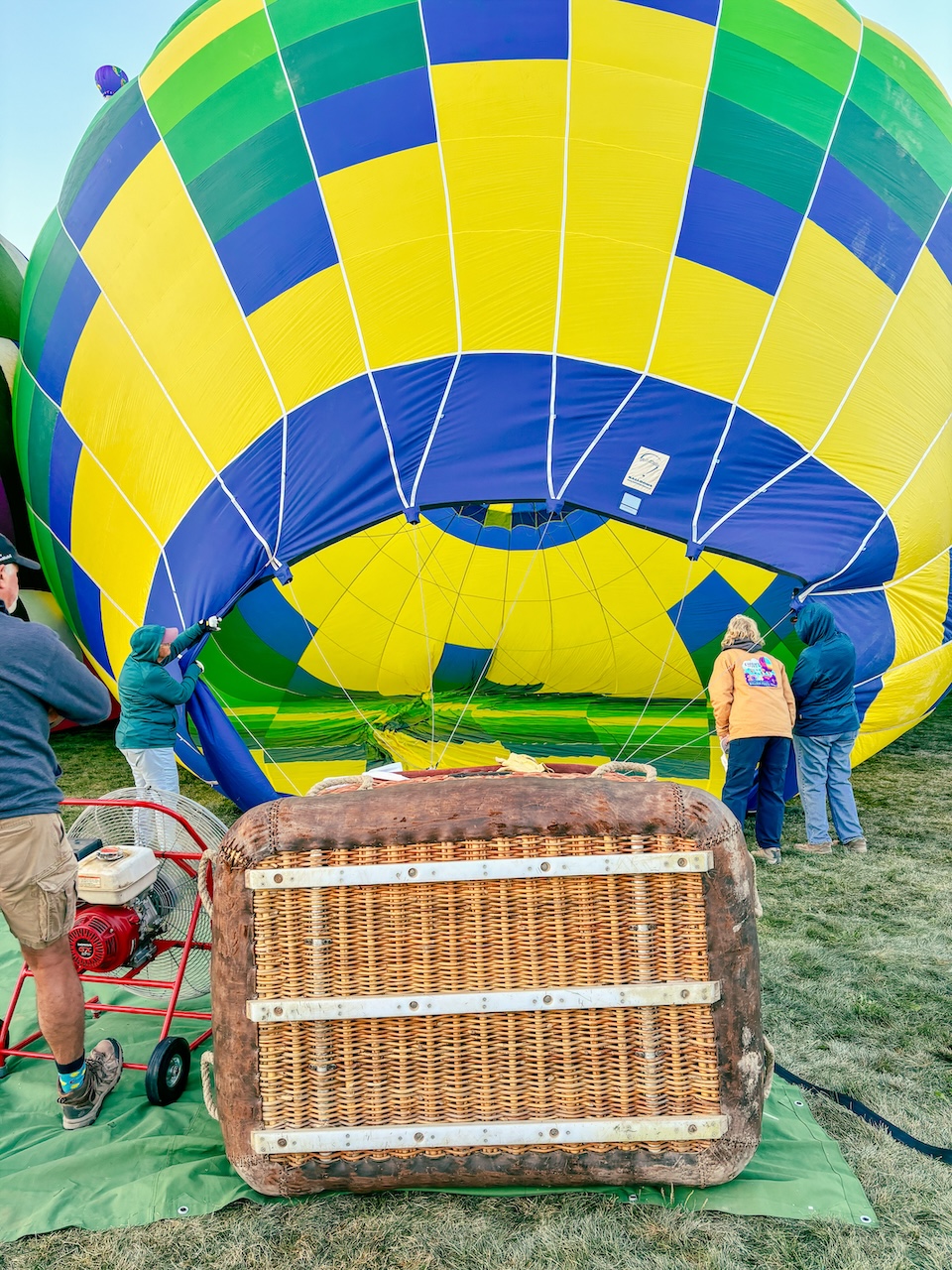
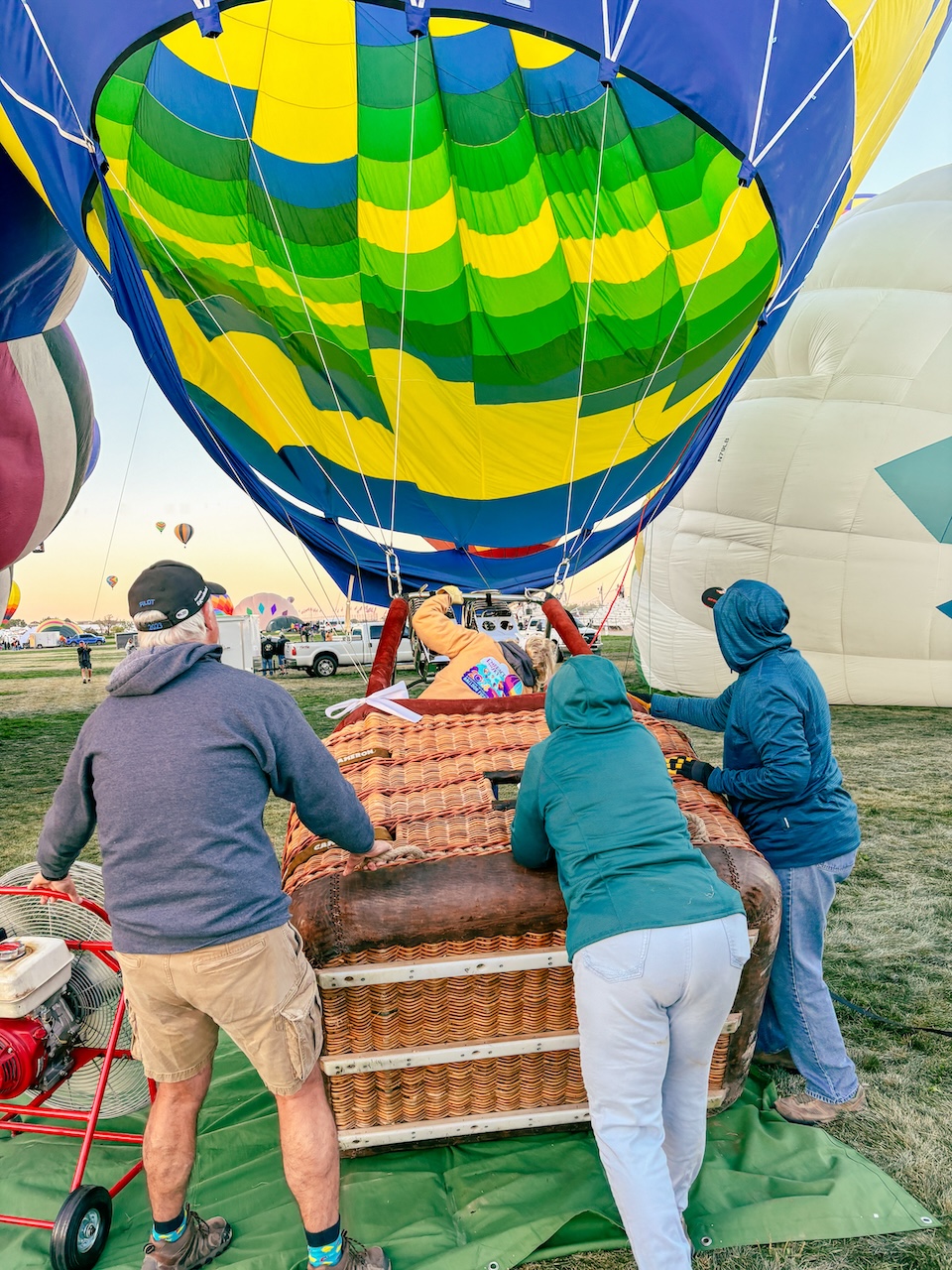
Eileen and her crew worked for several hours, pulling the burners and positioning the balloon just right for takeoff. Once we were cleared, we climbed into the basket, and within seconds of Eileen pulling the blast valve, a pool of hot air filled the balloon, and the earth quickly dropped away from our feet. Suddenly, Albuquerque and the Rio Grande River were miniature trinkets beneath us, and what filled my direct line of sight was blue sky and hundreds of balloons floating alongside us in peaceful silence.
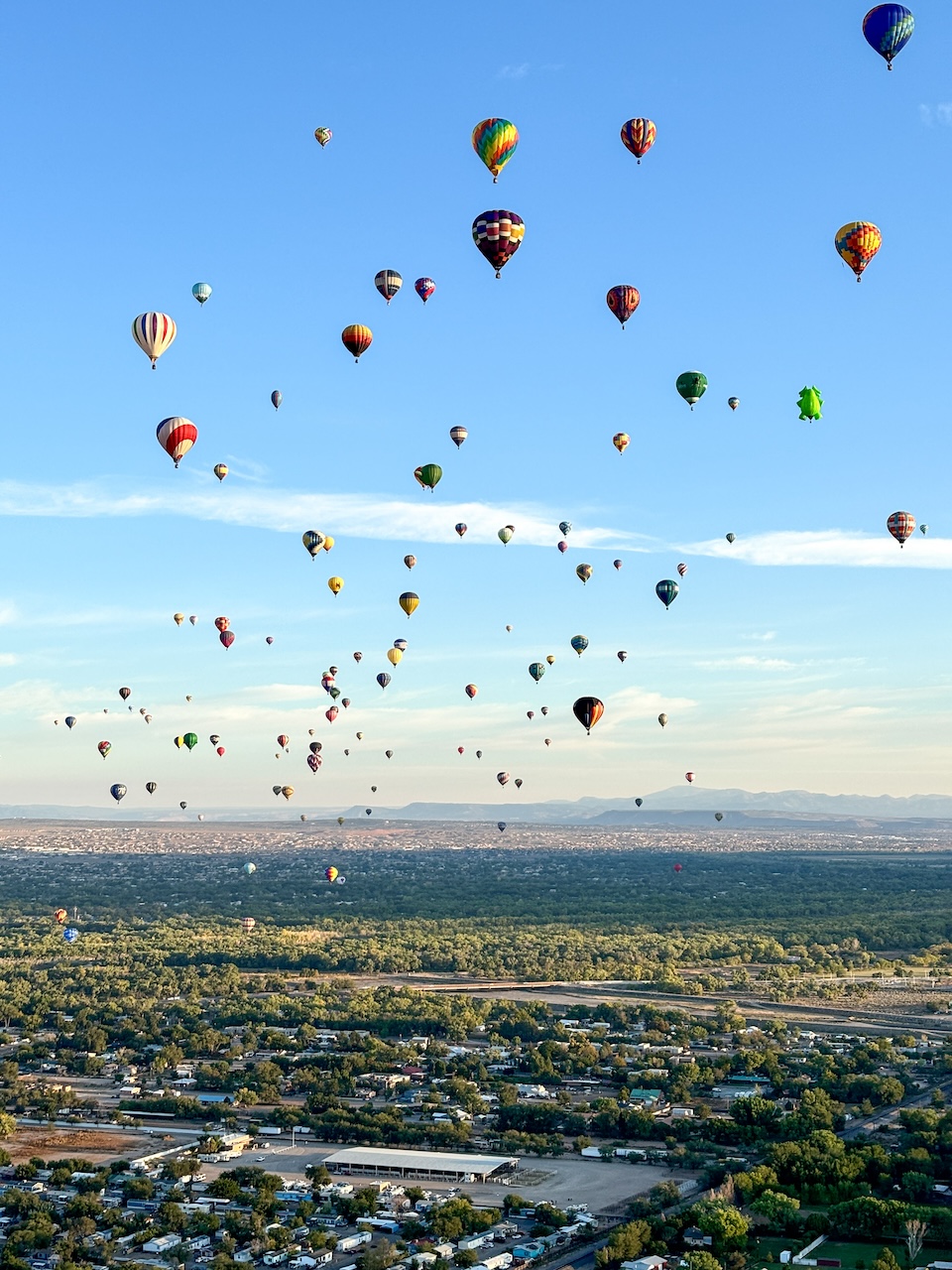
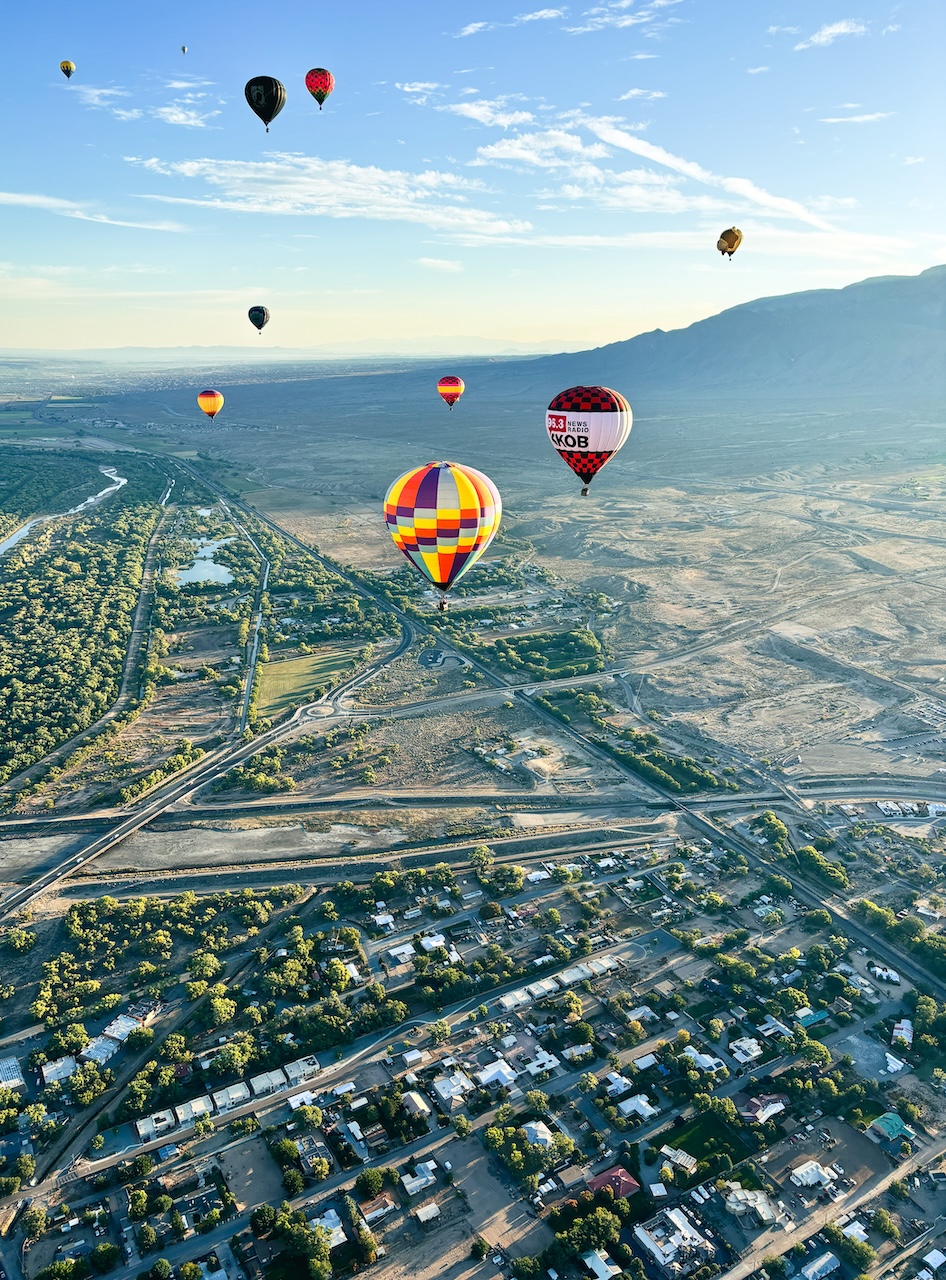
As we made our way further and further from the launch field, I began to notice giant Xs painted in people’s yards: white for “yes, land here,” red for “please don’t.” For those who claimed their property as a no-land zone, the responsibility of an 800-pound hot air balloon landing in their yard is too much to bear. But for the locals who welcome the possible interaction of a balloon landing in their backyard, it’s the thrill of a lifetime.
Approaching 8,000 feet above sea level, I realized just how fragile this flight was. Balloons don’t have steering wheels; they go where the wind decides. A balloon pilot for 35 years, Eileen says, despite the favorable weather conditions in the area, this is one of the most difficult places to fly because of where you can land. Another look below, I could see what she meant. There are no open fields for landing, only neighborhoods, businesses, and backyards. After about an hour successfully soaring through the sky, gently bobbing up and down, sideways and the other ways, Eileen made the decision based on the changing winds and our particular position, to land.
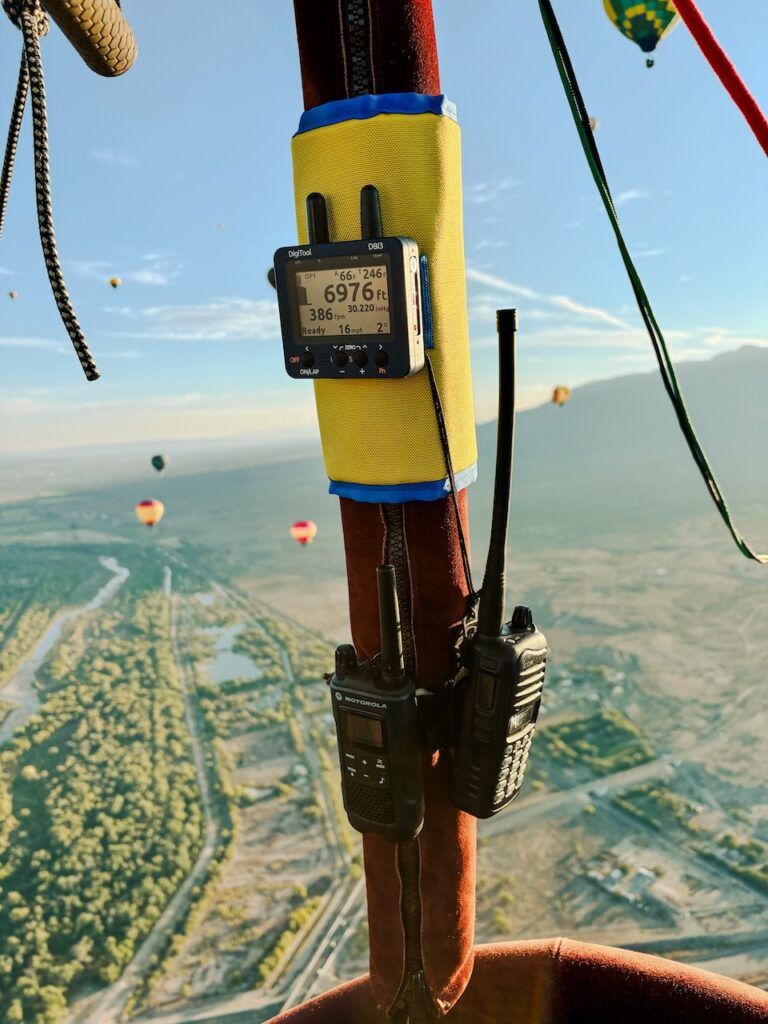
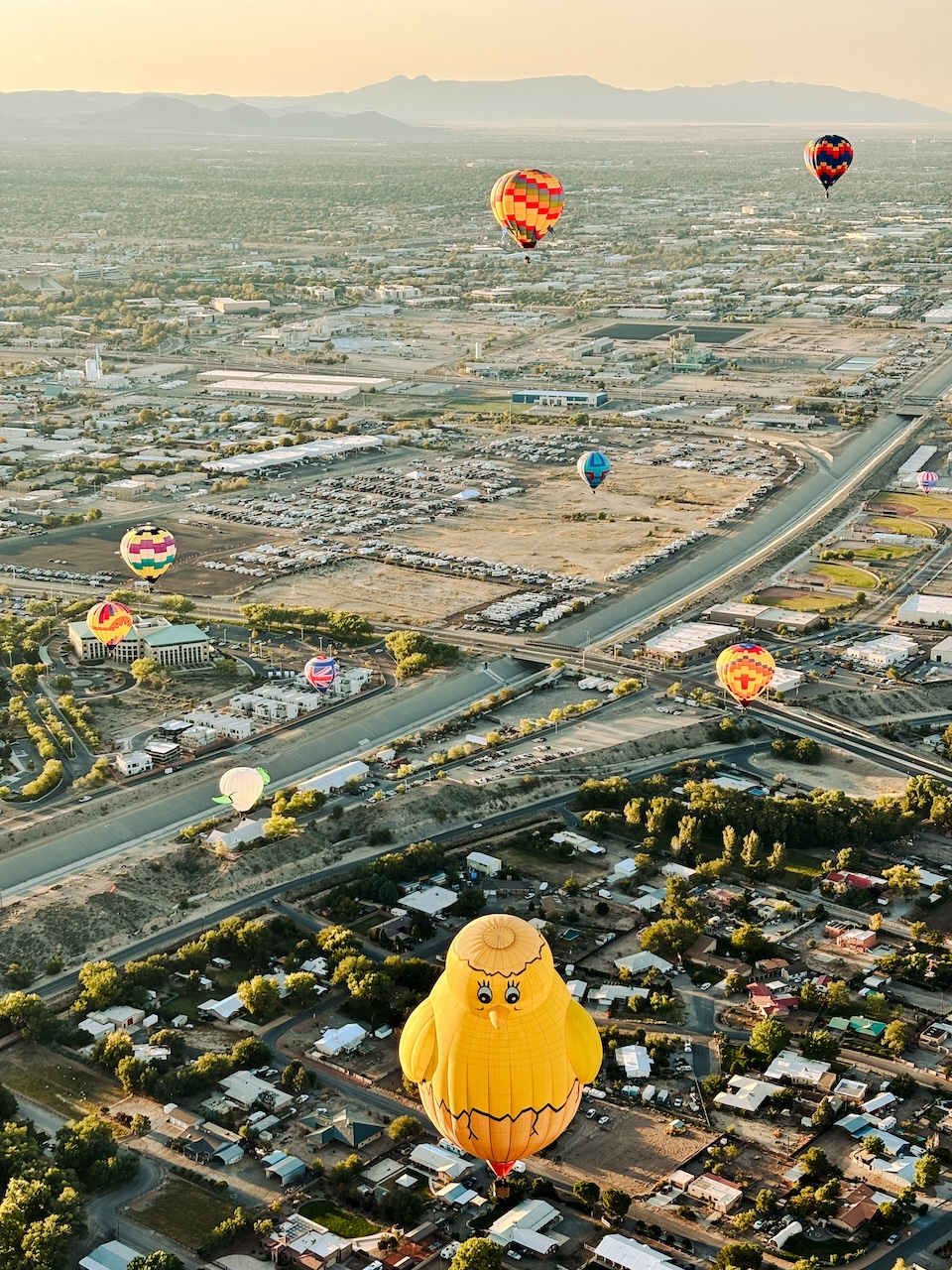
The (crash) landing
Because pilots are limited by wind conditions as to where they land, each balloon crew has a chase van. Eileen’s husband and their other crew members were driving our chase van. Just as the name implies, they chased us around, following our tracks in the sky, to be there, boots on the ground, whenever and wherever we decided to land.
Our first attempt at landing was not successful. Eileen scoured the land from above, trying to find an open field or backyard for safe landing. Cruising over power lines, tree tops and roofs tops we attempted to land a second time. This one stuck. But it was not a soft landing.
Eileen spotted a clearing near a neighborhood and called for me and the other crew member, “to get down and brace ourselves.” We crouched down in the basket, holding onto my camera with one hand and the basket handles with the other. Bracing as the basket scraped against the earth, we hit the ground hard, bouncing across the field. Unfortunately, we stuck our landing in the middle of a cactus field. Not so good for a $25,000 balloon to be dragged across.
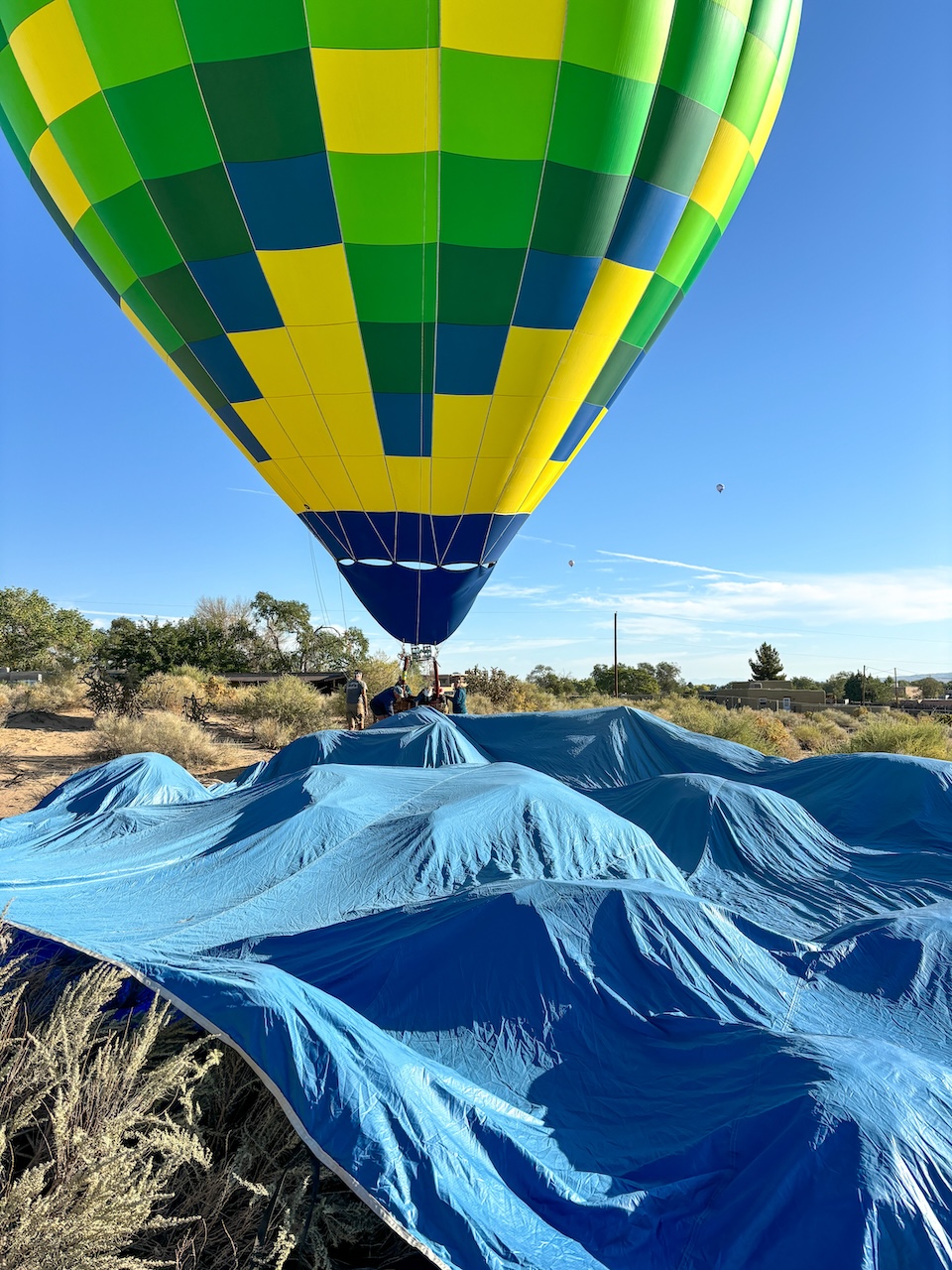
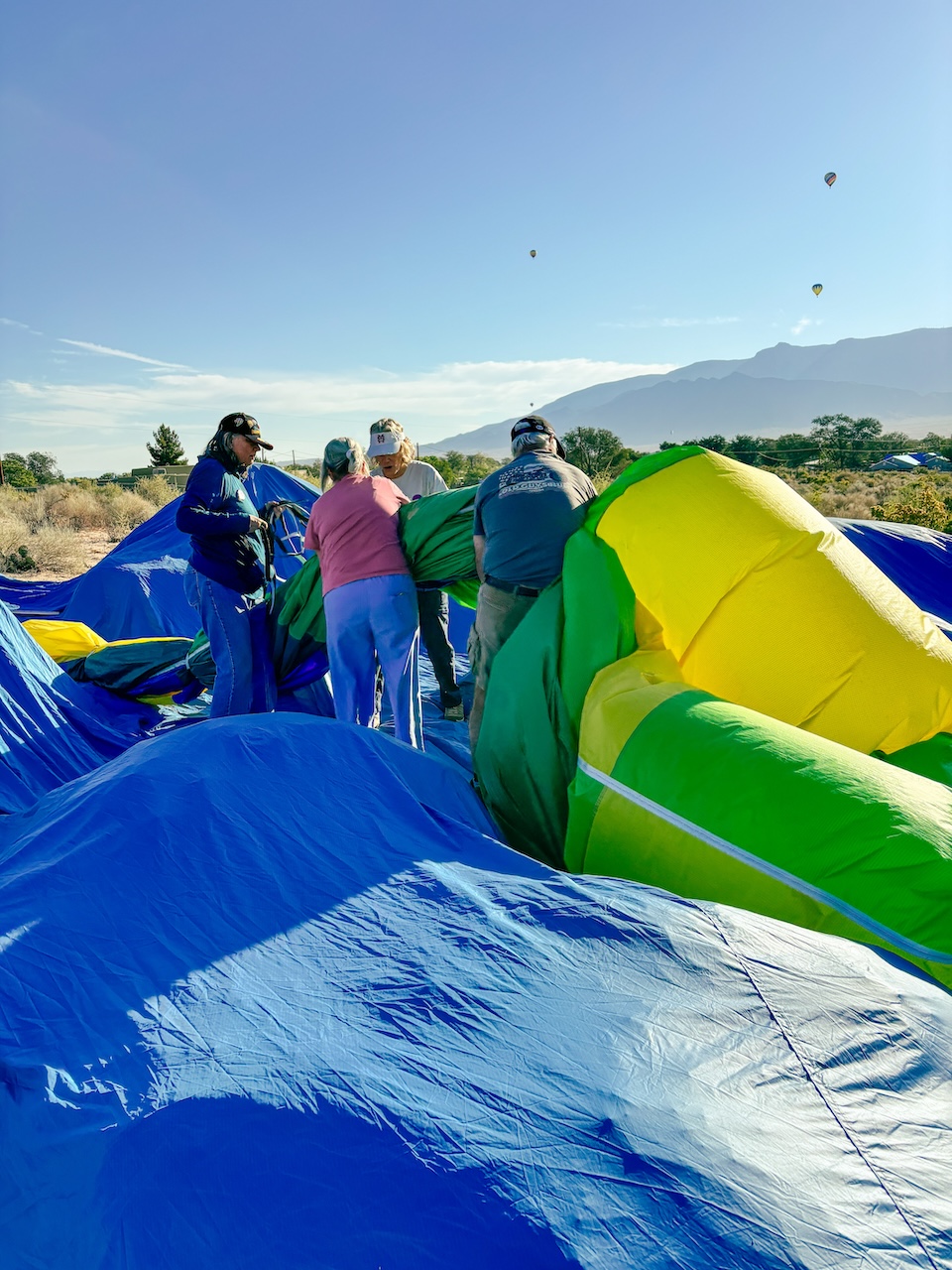
The wind, relentless in its nature, almost tipped the basket, picking us back up. We held on tight, shifting our weight to the other side of the basket. There we were, in the middle of a cactus field, the basket and balloon dragging on the ground, and the balloon ready to take off again. Neighbors rushed from their homes to help, grabbing the basket, adding as much weight as we could to stay grounded.
Once our chase van arrived, we finally had a good number of people to wrap up the balloon and deflate it. The 250-pound balloon needed everyone’s strength. To protect the balloon from the prickly cacti, we laid down a massive tarp. Working together, we filed in line and lowered the balloon to the ground, wrapping it up with multiple straps, then sitting and “butt-burping” to remove access air, and then stuffing it into a large stuff sack. Then came lifting the basket with helium tanks and carrying it across the cactus-ridden field, where I was sure I would find a rattlesnake. Luckily, I never did.
For over an hour, we fought the wind, deflated the balloon, packed it up, and loaded it into the van—work that required every ounce of strength and teamwork. Rewarded for their assistance, the good semaritans were each given a “thank you” card from Eileen and the crew for their help. I could see the pride and excitement on their faces for being recognized as honorary crew members and their valiant efforts to help with our recovery.
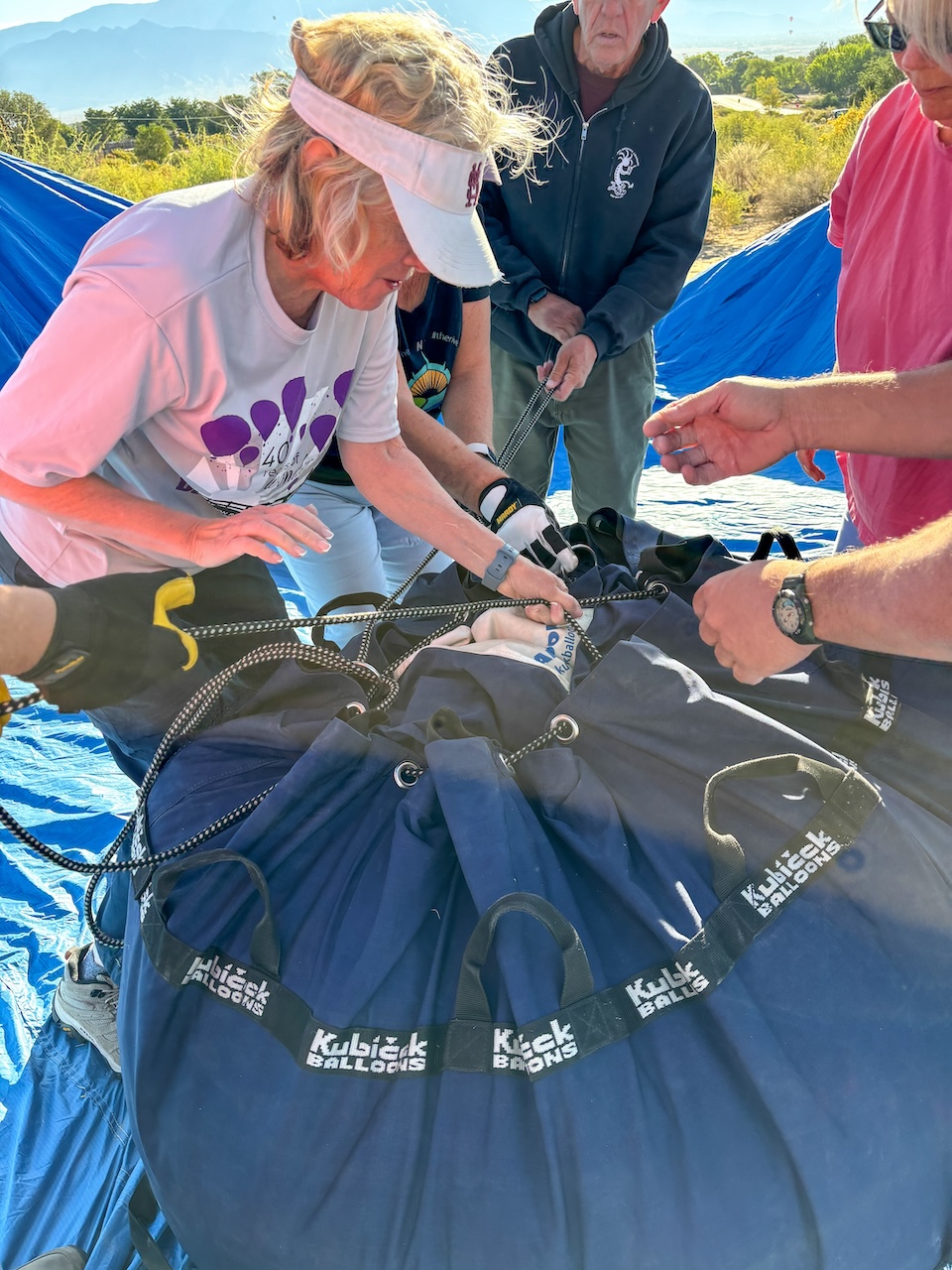
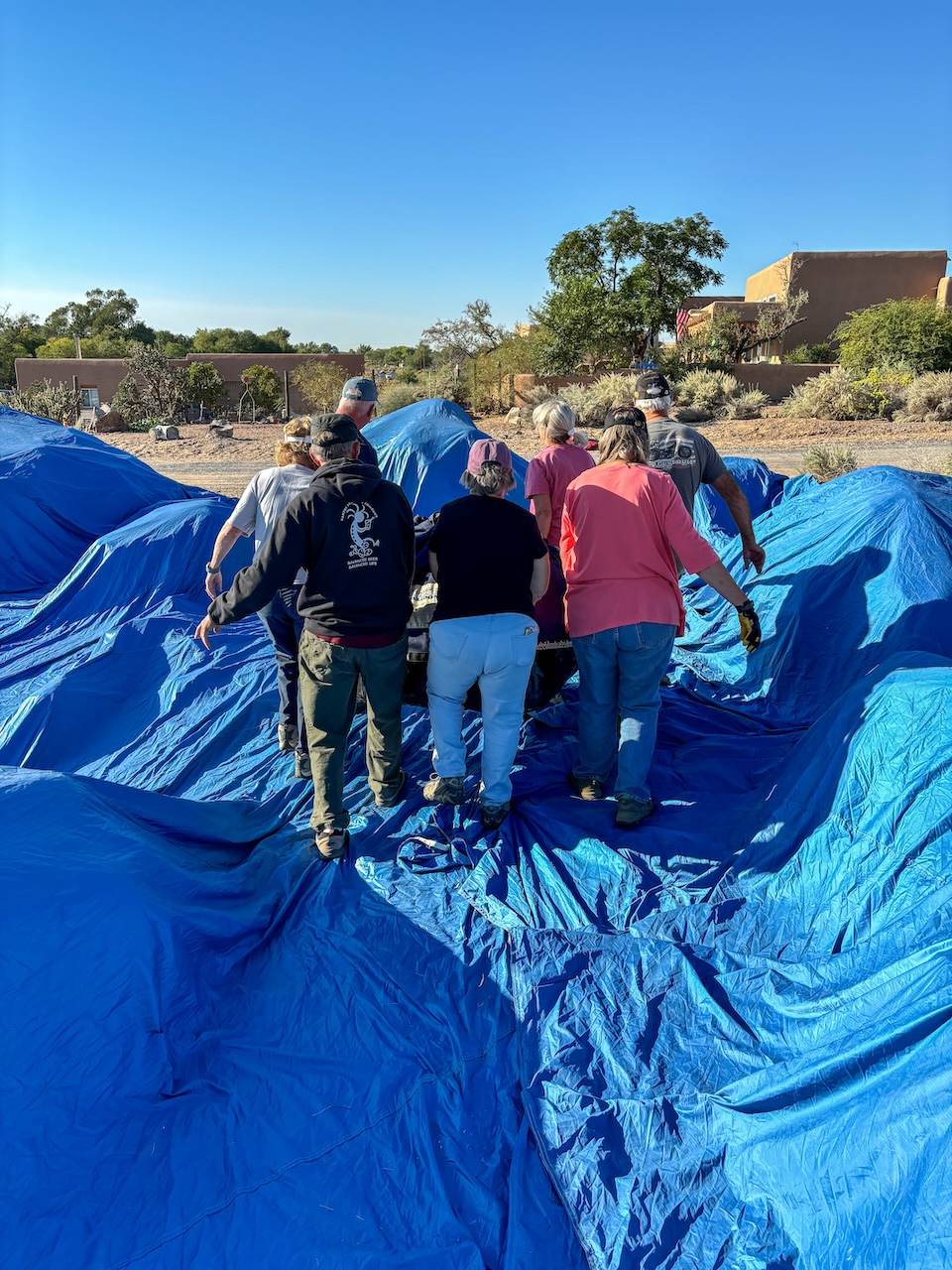
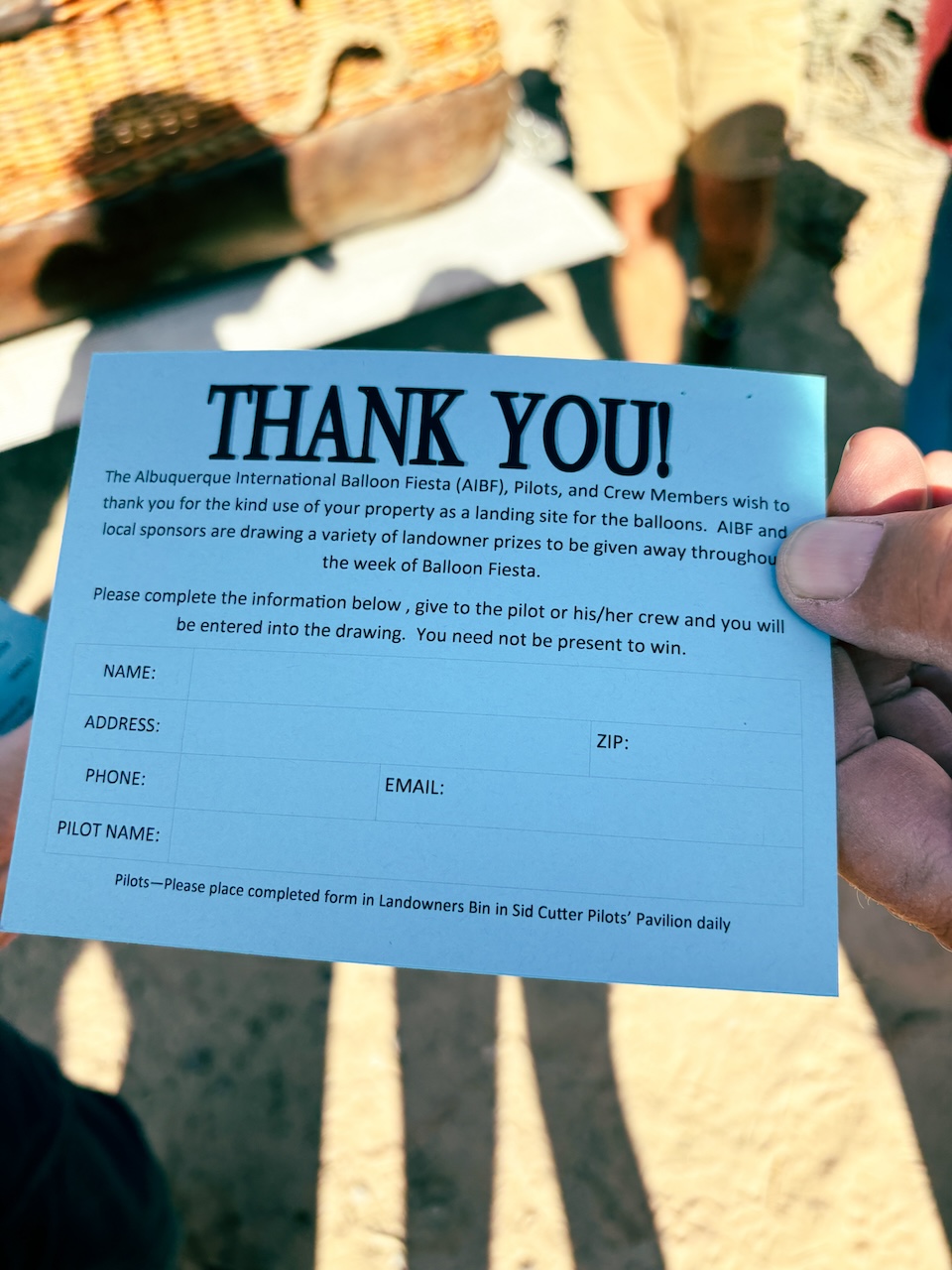
A champagne toast
Afterward, we gathered back at the field to celebrate “first flight” riders. While it wasn’t technically my first time flying, it was my first time at the event. So, I went with it. A tradition that began in the 1780s when hot air balloons first took flight, the ceremony celebrates a successful flight with a champagne toast and the reciting of the Balloonist’s Prayer or Blessing. The post-ride event is a true family affair with other pilots and crew members who have been riding together for years.
After my experience, I no longer saw balloons as light and whimsical. They were heavy, stubborn, and utterly dependent on cooperation. And yet, I found myself already planning my next flight in the sky. Ballooning isn’t for everyone, but that’s the best part about the Albuquerque hot air balloon fiesta, you can feel a part of it all without having to actually ride in a balloon.
What you can expect at the Albuquerque Hot Air Balloon Fiesta
Expect crowds, but not the type of large crowds you’d see at New Year’s Eve in Times Square. Albuquerque is a small to moderate-sized town that definitely feels the influx of people, but nothing feels unmanageable. Early risers will see the main attraction, the balloon ascention, but for those who prefer the evening, they can catch the “Balloon Glows,” when balloons remain tethered and illuminated after sunset, turning the field into a glowing wonderland. There are also chainsaw carving competitions, skydiving exhibitions, and an impressive roster of food vendors serving New Mexican staples like breakfast burritos and green chile stew. For photographers, the Fiesta is a dream. The combination of colorful balloons, the dramatic backdrop of the Sandias, and the celebratory atmosphere makes it one of the most photographed events in the world.
I also highly suggest visiting the Anderson Abruzzo International Balloon Museum. Learn about the first flight to take place in a hot air balloon and how air travel has evolved since. Located at the festival grounds, it’s an easy add-on to the overall experience. And if your pockets are padded, VIP tickets are available for balcony views and dining during the festival.
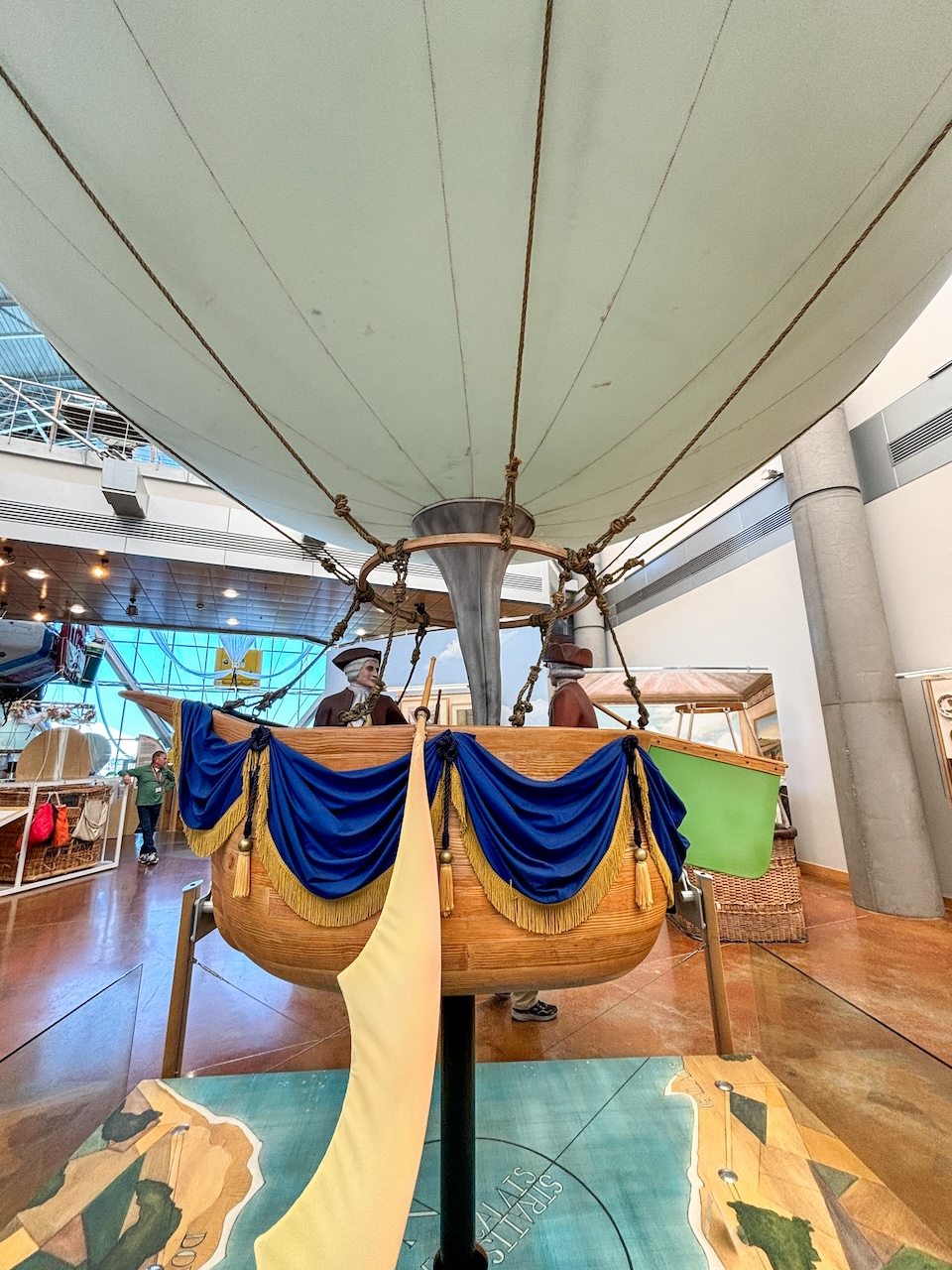
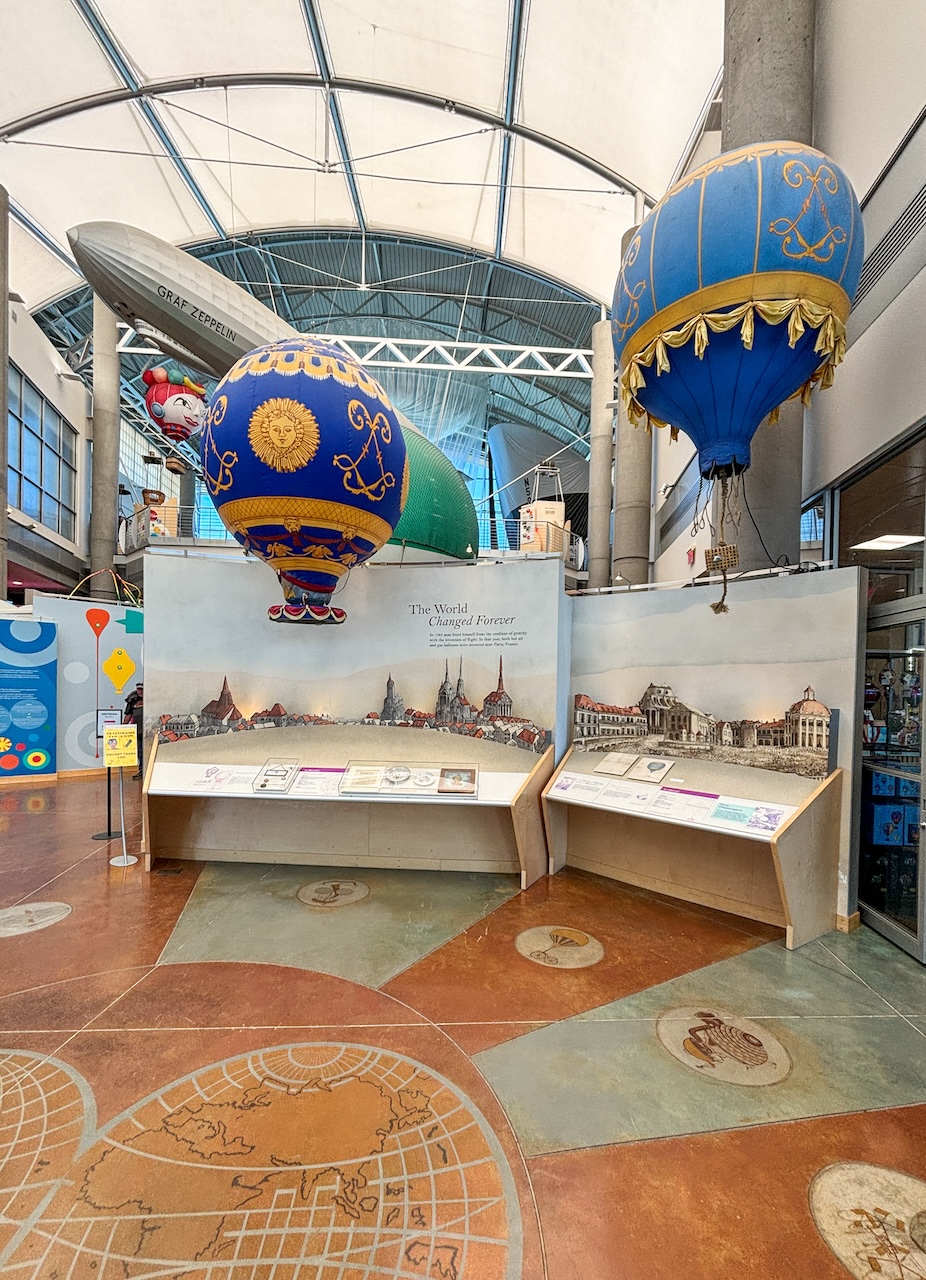
Ballooning is the closest most of us will ever come to flying like birds, carried by nothing but air and fire. From the ground, it looks effortless. From the basket, it’s humbling. But whether you’re riding in a balloon, standing in the launch field, or simply spotting one on your way to work, the Fiesta creates the same reflex: you look up, you point, and you say, “Oh look—there’s a balloon.” And that simple joy is what keeps this tradition alive.


